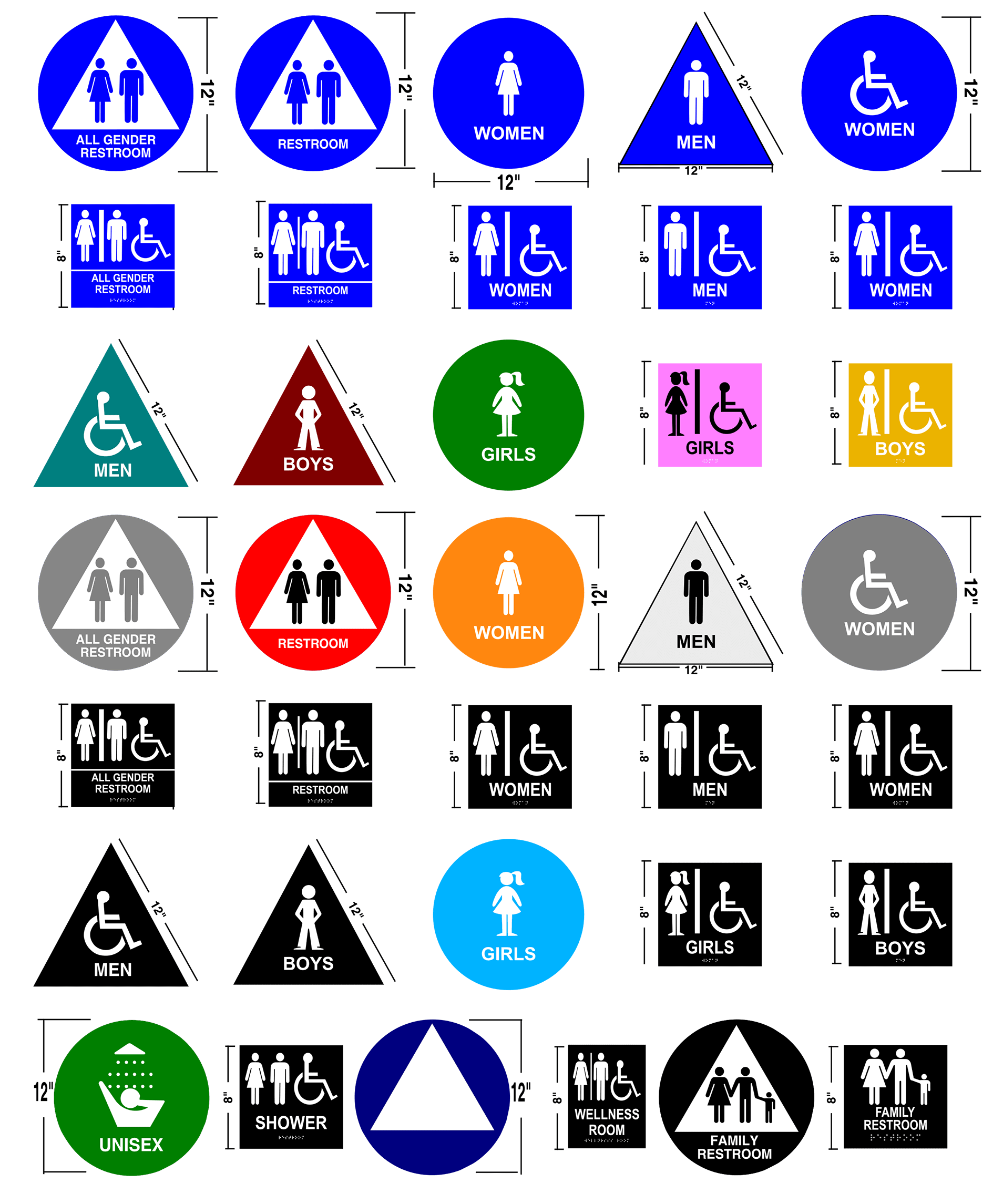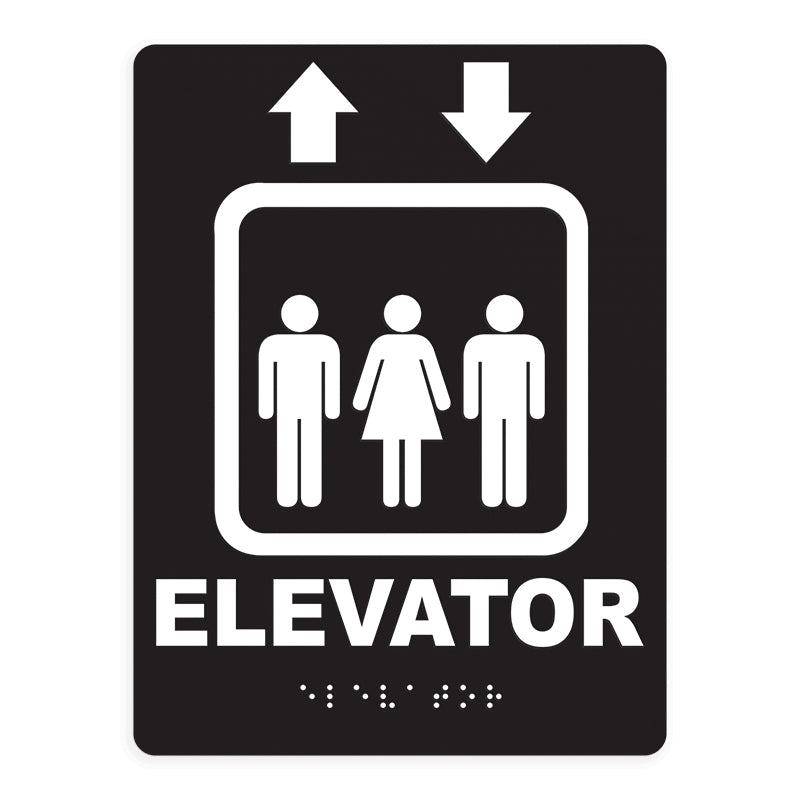Just How ADA Signs Enhance Ease Of Access for Everyone
Just How ADA Signs Enhance Ease Of Access for Everyone
Blog Article
Exploring the Key Features of ADA Indicators for Boosted Accessibility
In the world of access, ADA signs offer as silent yet powerful allies, making sure that spaces are accessible and inclusive for individuals with handicaps. By integrating Braille and responsive components, these signs break obstacles for the visually impaired, while high-contrast shade schemes and legible typefaces cater to diverse aesthetic demands.
Importance of ADA Compliance
Making sure conformity with the Americans with Disabilities Act (ADA) is essential for promoting inclusivity and equal accessibility in public spaces and work environments. The ADA, established in 1990, mandates that all public centers, companies, and transport solutions fit people with disabilities, ensuring they appreciate the same rights and chances as others. Conformity with ADA criteria not only fulfills legal responsibilities however additionally boosts an organization's credibility by demonstrating its commitment to diversity and inclusivity.
One of the crucial elements of ADA compliance is the implementation of obtainable signs. ADA signs are designed to guarantee that individuals with handicaps can quickly navigate with spaces and buildings.
In addition, sticking to ADA policies can minimize the risk of potential penalties and legal repercussions. Organizations that fall short to adhere to ADA standards might deal with lawsuits or charges, which can be both damaging and monetarily troublesome to their public image. Hence, ADA compliance is indispensable to promoting a fair atmosphere for everyone.
Braille and Tactile Components
The unification of Braille and tactile elements into ADA signs embodies the principles of availability and inclusivity. It is commonly positioned below the equivalent message on signs to make certain that people can access the details without aesthetic aid.
Responsive aspects expand past Braille and consist of increased characters and signs. These elements are created to be discernible by touch, allowing individuals to determine room numbers, restrooms, leaves, and various other essential areas. The ADA establishes certain guidelines concerning the size, spacing, and placement of these tactile aspects to enhance readability and ensure consistency throughout various atmospheres.

High-Contrast Shade Plans
High-contrast color design play a crucial role in improving the presence and readability of ADA signs for individuals with aesthetic disabilities. These schemes are crucial as they make best use of the difference in light reflectance in between text and background, ensuring that signs are easily noticeable, also from a distance. The Americans with Disabilities Act (ADA) mandates the usage of specific shade contrasts to suit those with minimal vision, making it a critical facet of conformity.
The efficacy of high-contrast colors depends on their capacity to attract attention in numerous lighting problems, including poorly lit atmospheres and areas with glare. Typically, dark message on a light background or light text on a dark history is used to attain optimum comparison. For circumstances, black message on a white or yellow background gives a stark visual distinction that helps in fast acknowledgment and understanding.

Legible Fonts and Text Size
When taking into consideration the layout of ADA signage, the choice of readable font styles and ideal text dimension can not be overemphasized. These components are essential for making sure that signs are available to people with aesthetic problems. The Americans with Disabilities Act (ADA) mandates that typefaces need to be not italic and sans-serif, oblique, manuscript, highly decorative, or of unusual form. These needs aid ensure that the text is quickly readable from a distance which the personalities are appreciable to varied audiences.
According to ADA standards, the minimal text elevation should be 5/8 inch, and it needs to raise proportionally with watching distance. Uniformity in text dimension more info here contributes to a cohesive aesthetic experience, helping individuals in navigating environments effectively.
Moreover, spacing between lines and letters is important to legibility. Appropriate spacing prevents characters from appearing crowded, boosting readability. By sticking to these requirements, developers can considerably enhance ease of access, making certain that signage serves its desired purpose for all individuals, despite their aesthetic abilities.
Effective Placement Approaches
Strategic placement of ADA signs is important for making the most of availability and ensuring compliance with legal criteria. Properly positioned indications lead individuals with disabilities efficiently, promoting navigation in public spaces. Secret factors to consider include visibility, distance, and height. ADA guidelines state that indications need to be installed at an elevation between 48 to 60 inches from the ground to guarantee they are within the line of view for both standing and seated individuals. This basic elevation array is essential for inclusivity, allowing mobility device customers and individuals of varying elevations to accessibility details easily.
Additionally, indications must be placed surrounding to the lock side of doors to allow easy recognition prior to entrance. This placement aids individuals locate spaces and spaces without blockage. In situations where there is no door, useful reference signs should be positioned on the nearby nearby wall. Uniformity in indication placement throughout a center boosts predictability, decreasing confusion and improving total user experience.

Final Thought
ADA signs play a crucial duty in advertising ease of access by incorporating attributes that deal with the requirements of people with impairments. Integrating Braille and responsive components guarantees important information is available to the aesthetically damaged, while high-contrast shade plans and legible sans-serif fonts improve exposure throughout numerous lights conditions. Efficient positioning methods, such as ideal mounting heights and calculated locations, further help with navigation. These aspects collectively promote an inclusive setting, emphasizing the relevance of ADA conformity in ensuring equivalent access for all.
In the world of accessibility, ADA signs offer as quiet yet powerful allies, guaranteeing that spaces are accessible and comprehensive for individuals with impairments. The ADA, enacted in 1990, mandates that all public centers, employers, and transport solutions accommodate people with specials needs, ensuring they enjoy the same rights and opportunities as others. ADA Signs. ADA signs are made to make sure that individuals with handicaps can easily browse with buildings and spaces. ADA guidelines specify that indications should be placed at a height in between 48 to 60 inches from the ground to ensure they are within the line of view for both standing and seated individuals.ADA indicators play a crucial role in advertising accessibility by incorporating features that resolve the requirements of people with impairments
Report this page